Numerical Study of the Coupling of Sub-Terahertz Radiation to n-Channel Strained-Silicon MODFETs
Abstract
:1. Introduction
2. Materials and Methods
2.1. n-Type MODFETs Based on Si/SiGe Heterojunctions
2.2. Terahertz Characterization
3. Results and Discussion
4. Conclusions
Author Contributions
Funding
Acknowledgments
Conflicts of Interest
References
- Mittleman, D.M. Perspective: Terahertz science and technology. J. Appl. Phys. 2017, 122, 230901. [Google Scholar] [CrossRef]
- De Lucia, F. Spectroscopy in the terahertz spectral region. In Sensing with Terahertz Radiation; Mittleman, D., Ed.; Springer: Berlin, Germany, 2003; pp. 39–115. [Google Scholar]
- Walker, C.K. Terahertz Astronomy; CRC Press: Boca Ratón, FL, USA, 2015. [Google Scholar]
- Federici, J.; Moeller, L. Review of terahertz and subterahertz wireless communications. J. Appl. Phys. 2010, 107, 111101. [Google Scholar] [CrossRef] [Green Version]
- Federici, J.F.; Schulkin, B.; Huang, F.; Gary, D.; Barat, R.; Oliveira, F.; Zimdars, D. THz imaging and sensing for security applications—Explosives, weapons and drugs. Semicon. Sci. Technol. 2005, 20, S266–S280. [Google Scholar] [CrossRef]
- Kleine-Ostmann, T. THz metrology. In Proceedings of the 38th International Conference on Infrared, Millimeter, and Terahertz Waves (IRMMW-THz), Mainz, Germany, 1–6 September 2013. [Google Scholar]
- Dhillon, S.S.; Vitiello, M.S.; Linfield, E.H.; Davies, A.G.; Hoffmann, M.C.; Booske, J.; Paoloni, C.; Gensch, M.; Weightman, P.; Williams, G.P.; et al. The 2017 terahertz science and technology roadmap. J. Phys. D Appl. Phys. 2017, 50, 043001. [Google Scholar] [CrossRef]
- Lewis, R.A. A review of terahertz detectors. J. Phys. D 2019, 52, 433001. [Google Scholar] [CrossRef]
- Dyakonov, M.; Shur, M.S. Shallow water analogy for a ballistic field effect transistor: New mechanism of plasma wave generation by dc current. Phys. Rev. Lett. 1993, 71, 2465–2468. [Google Scholar] [CrossRef]
- Dyakonov, M.; Shur, M.S. Mixing, and frequency multiplication of terahertz radiation by two-dimensional electronic fluid. IEEE Trans. Electron. Dev. 1996, 43, 380–387. [Google Scholar] [CrossRef]
- Tauk, R.; Teppe, F.; Boubanga, S.; Coquillat, D.; Knap, W.; Meziani, Y.M.; Gallon, C.; Boeuf, F.; Skotnicki, T.; Fenouillet-Beranger, C.; et al. Plasma wave detection of terahertz radiation by silicon field effects transistors: Responsivity and noise equivalent power. Appl. Phys. Lett. 2006, 89, 253511. [Google Scholar] [CrossRef] [Green Version]
- Meziani, Y.M.; Garcia-Garcia, E.; Velazquez-Perez, J.E.; Coquillat, D.; Dyakonova, N.; Knap, W.; Grigelionis, I.; Fobelets, K. Terahertz imaging using strained-Si MODFETs as sensors. Solid State Electron. 2013, 83, 113–117. [Google Scholar] [CrossRef]
- Knap, W.; Deng, Y.; Rumyantsev, S.; Shur, M.S. Resonant detection of subterahertz and terahertz radiation by plasma waves in submicron field-effect transistors. Appl. Phys. Lett. 2002, 81, 4637–4639. [Google Scholar] [CrossRef]
- Knap, W.; Kachorovskii, V.; Deng, Y.; Rumyantsev, S.; Lu, J.Q.; Gaska, R.; Shur, M.S.; Simin, G.; Hu, X.; Khan, M.A.; et al. Nonresonant detection of terahertz radiation in field effect transistors. J. Appl. Phys. 2002, 91, 9346–9353. [Google Scholar] [CrossRef]
- Knap, W.; Teppe, F.; Meziani, Y.; Dyakonova, N.; Lusakowski, J.; Boeuf, F.; Skotnicki, T.; Maude, D.; Rumyantsev, S.; Shur, M.S. Plasma wave detection of sub-terahertz and terahertz radiation by silicon field-effect transistors. Appl. Phys. Lett. 2004, 85, 675–677. [Google Scholar] [CrossRef] [Green Version]
- Oejefors, E.; Lisauskas, A.; Glaab, D.; Roskos, H.G.; Pfeiffer, U.R. Terahertz imaging detectors in CMOS technology. J. Infrared Millim. Terahertz Waves 2009, 30, 1269–1280. [Google Scholar]
- Schuster, F.; Coquillat, D.; Videlier, H.; Sakowicz, M.; Teppe, F.; Dussopt, L.; Giffard, B.; Skotnicki, T.; Knap, W. Broadband terahertz imaging with highly sensitive silicon CMOS detectors. Opt. Express 2011, 19, 7827–7832. [Google Scholar] [CrossRef] [PubMed]
- Lisauskas, A.; Pfeiffer, U.; Oejefors, E.; Bolivar, P.H.; Glaab, D.; Roskos, H.G. Rational design of high-responsivity detectors of terahertz radiation based on distributed self-mixing in silicon field-effect transistors. J. Appl. Phys. 2009, 105, 114511. [Google Scholar] [CrossRef]
- Delgado-Notario, J.A.; Velazquez-Perez, J.E.; Meziani, Y.M.; Fobelets, K. Sub-THz Imaging Using Non-Resonant HEMT Detectors. Sensors 2018, 18, 543. [Google Scholar] [CrossRef] [Green Version]
- Delgado-Notario, J.A.; Calvo-Gallego, J.; Velázquez-Pérez, J.E.; Ferrando-Bataller, M.; Fobelets, K.; Meziani, Y.M. Effect of the Front and Back Illumination on Sub-Terahertz Detection Using n-Channel Strained-Silicon MODFETs. Appl. Sci. 2020, 10, 5959. [Google Scholar] [CrossRef]
- Delgado-Notario, J.A.; Clericò, V.; Fobelets, K.; Velázquez-Pérez, J.E.; Meziani, Y.M. Room-Temperature Terahertz Detection and Imaging by Using Strained-Silicon MODFETs. In Design, Simulation and Construction of Field Effect Transistors, 1st ed.; Vikraman, D., Ed.; IntechOpen: Rijeka, Croatia, 2018; pp. 436–460. [Google Scholar]
- Boppel, S.; Lizauskas, A.; Seliuta, D.; Minkevicius, L.; Kasalynas, I.; Valusis, G.; Krozer, V.; Roskos, H.G. CMOS integrated antenna-coupled field-effect-transistors for the detection of 0.2 to 4.3 THz. IEEE Trans. Microw. Theory Tech. 2012, 60, 3834–3843. [Google Scholar] [CrossRef]
- Kurita, Y.; Ducournau, G.; Coquillat, D.; Satou, A.; Kobayashi, K.; Tombet, S.B.; Meziani, Y.M.; Popov, V.V.; Knap, W.; Suemitsu, T.; et al. Ultrahigh sensitive sub-terahertz detection by InP-based asymmetric dual-grating-gate high-electron-mobility transistors and their broadband characteristics. Appl. Phys. Lett. 2014, 104, 251114. [Google Scholar] [CrossRef] [Green Version]
- Watanabe, T.; Boubanga-Tombet, S.A.; Tanimoto, Y.; Fateev, D.; Popov, V.; Coquillat, D.; Knap, W.; Meziani, Y.M.; Wang, Y.; Minamide, H.; et al. InP-and gaas-based plasmonic high-electron-mobility transistors for room-temperature ultrahigh-sensitive terahertz sensing and imaging. IEEE Sens. J. 2013, 13, 88–89. [Google Scholar] [CrossRef]
- Delgado-Notario, J.A.; Clericò, V.; Diez, E.; Velázquez-Pérez, J.E.; Taniguchi, T.; Watanabe, K.; Otsuji, T.; Meziani, Y.M. Asymmetric dual-grating gates graphene FET for detection of terahertz radiations. APL Photonics 2020, 5, 066102. [Google Scholar] [CrossRef]
- Sakowicz, M.; Lusakowski, J.; Karpierz, K.; Grynberg, M.; Gwarek, W.; Boubanga, S.; Coquillat, D.; Knap, W.; Shchepetov, A.; Bollaert, S. A high mobility field-effect transistor as an antenna for sub-THz radiation. AIP Conf. Proc. 2010, 1199, 503–504. [Google Scholar]
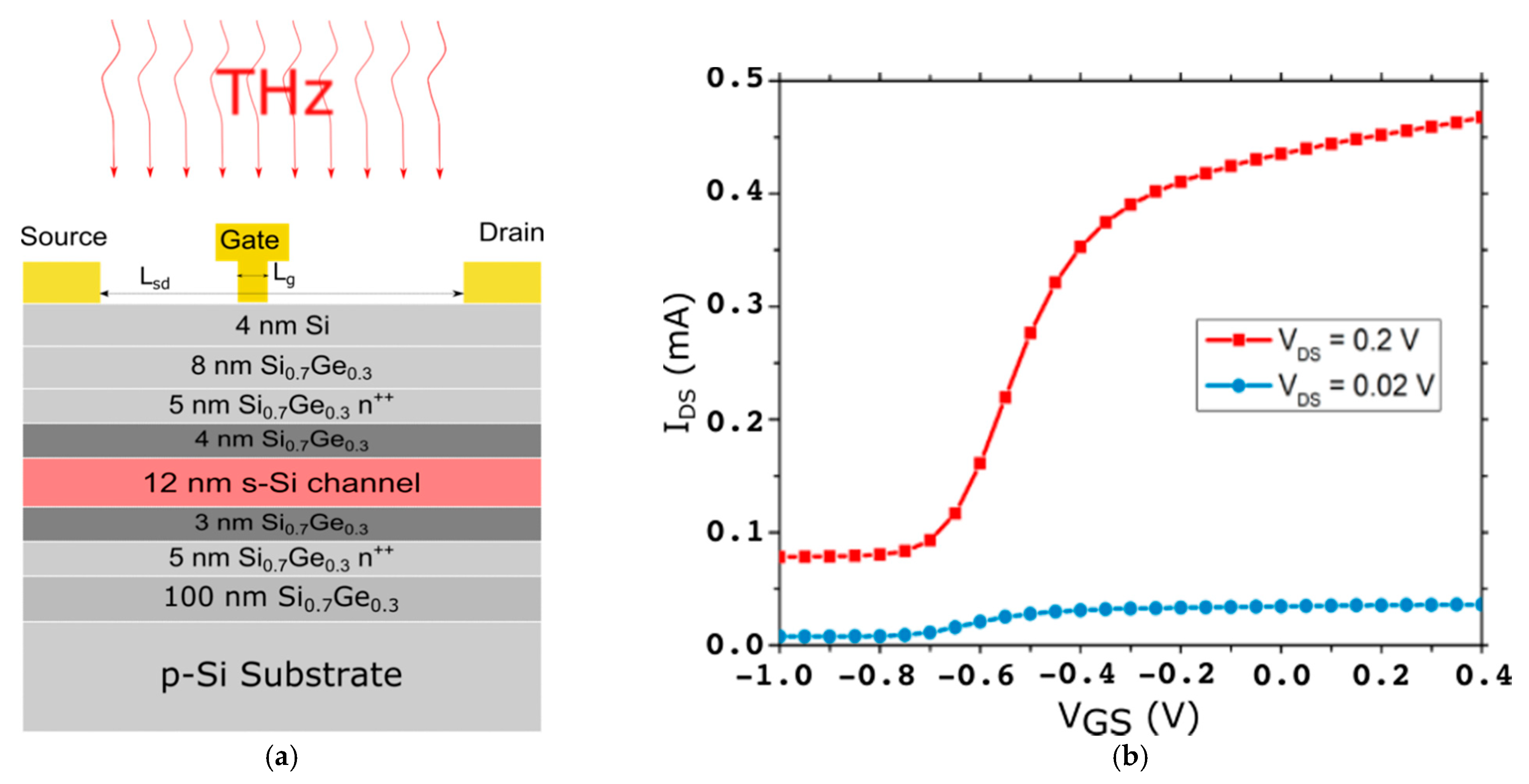
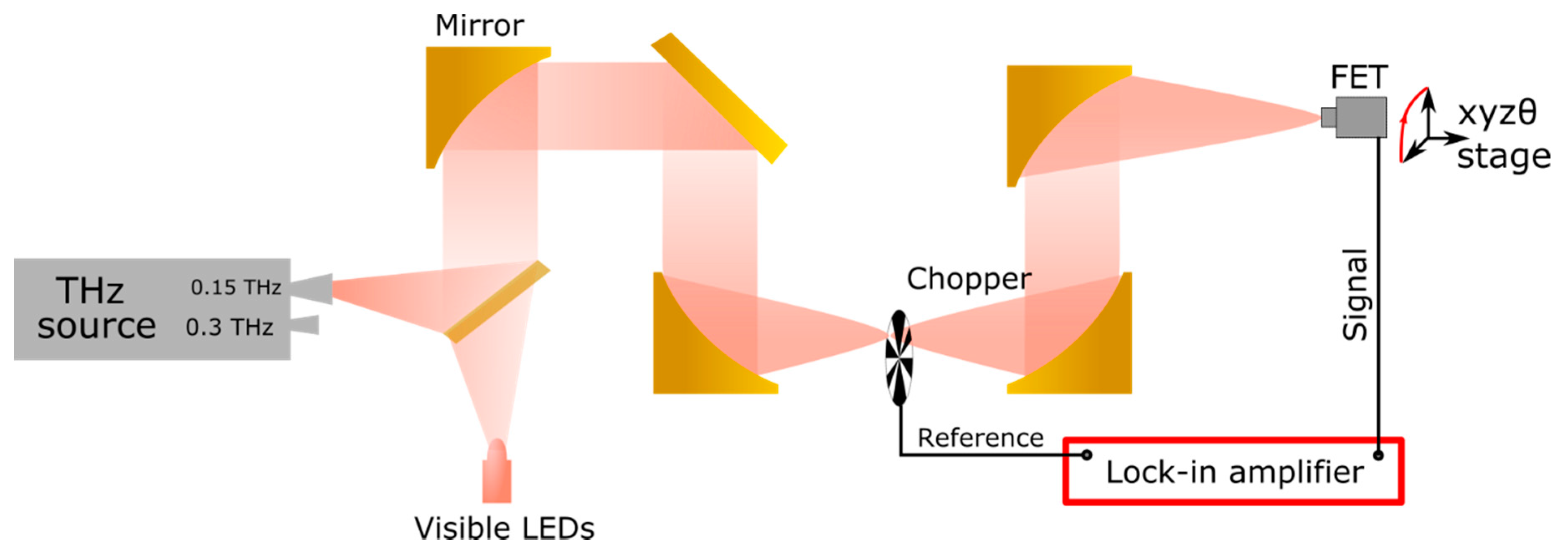
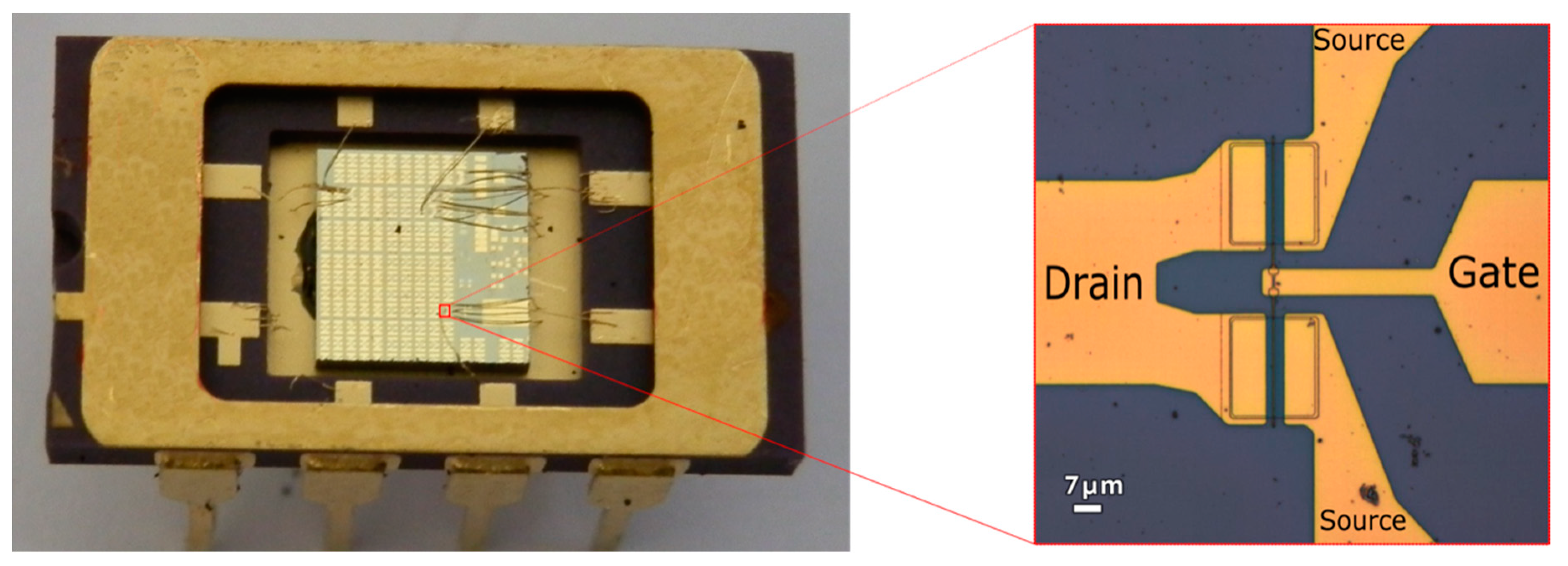

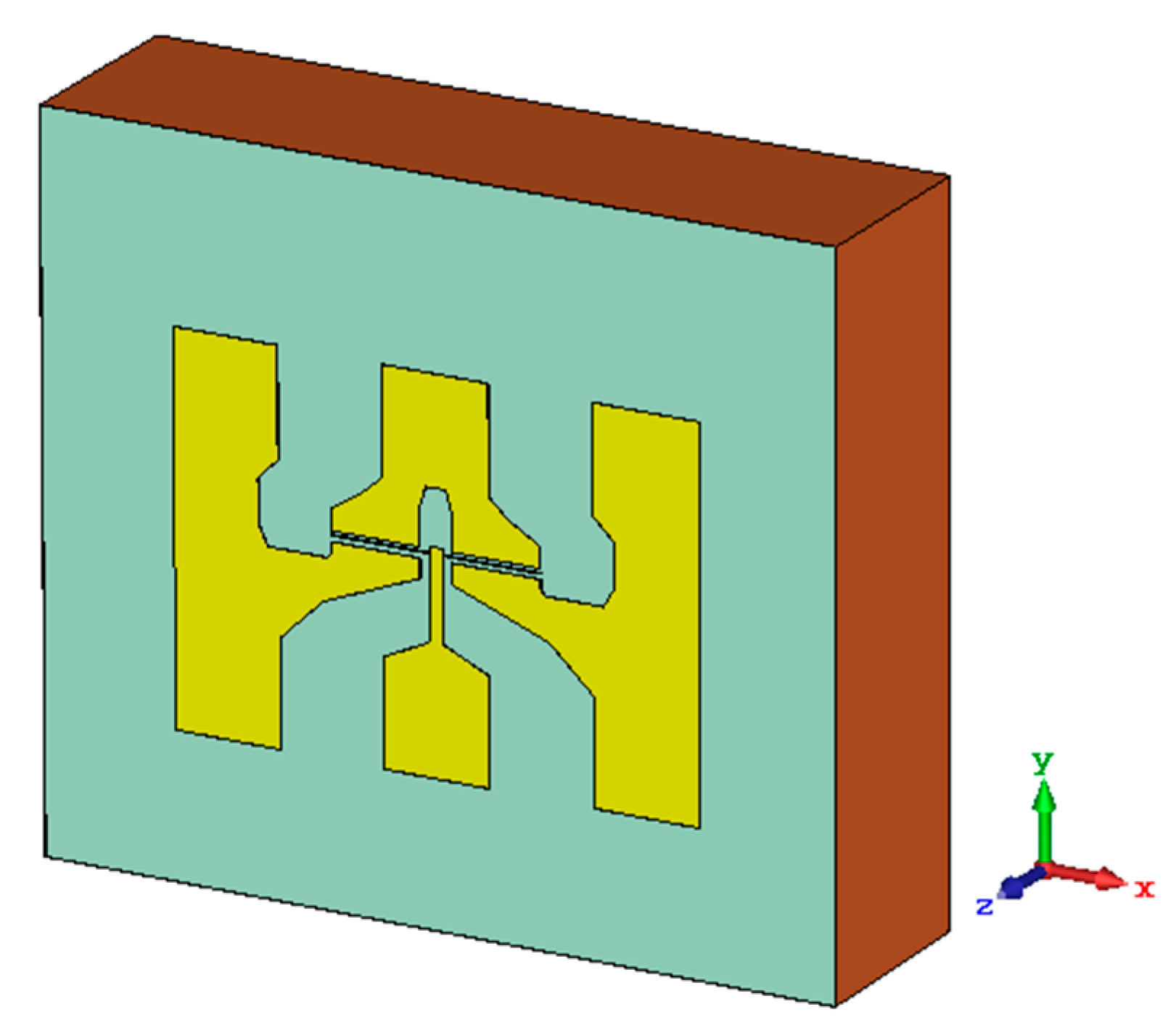
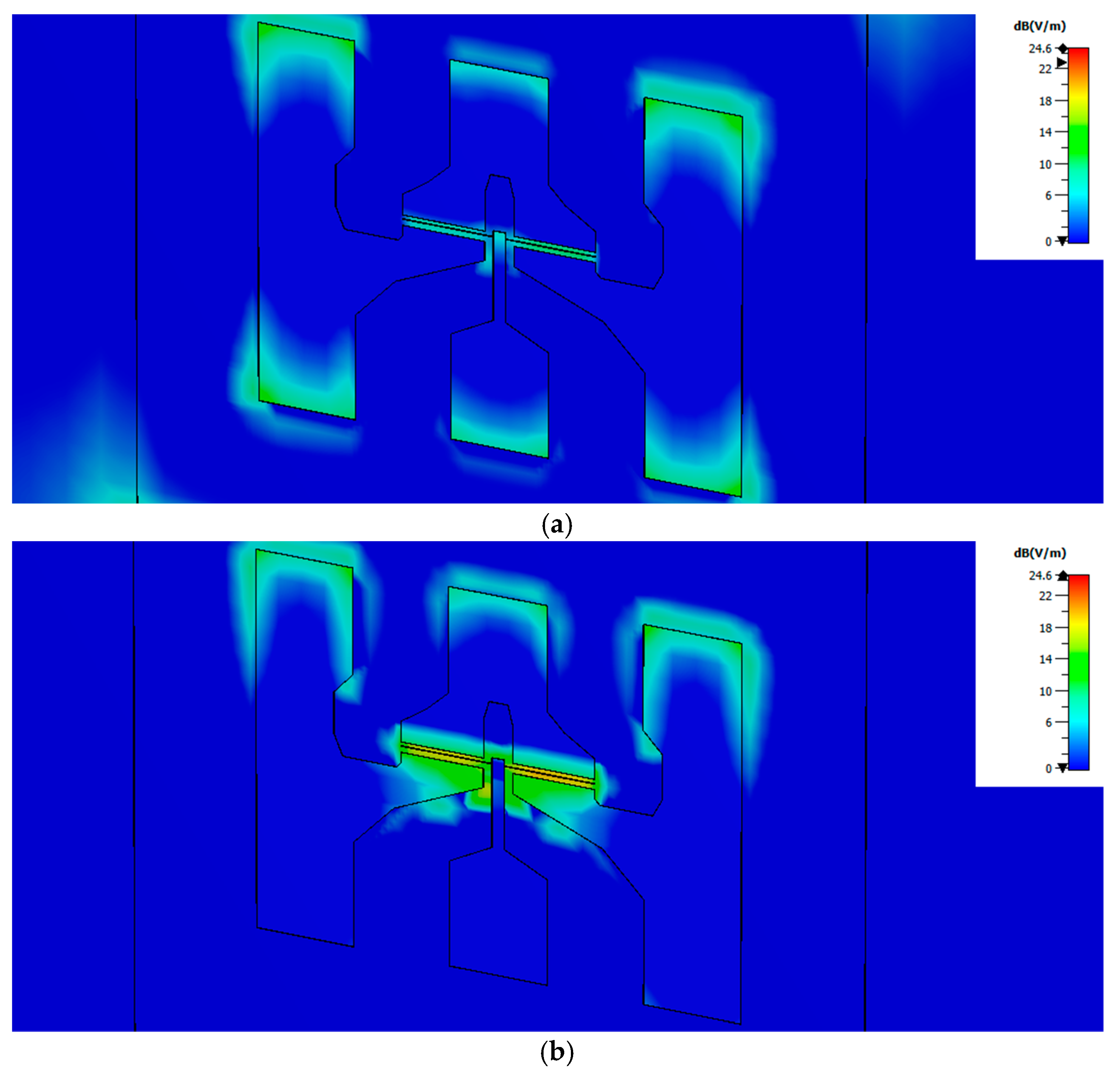
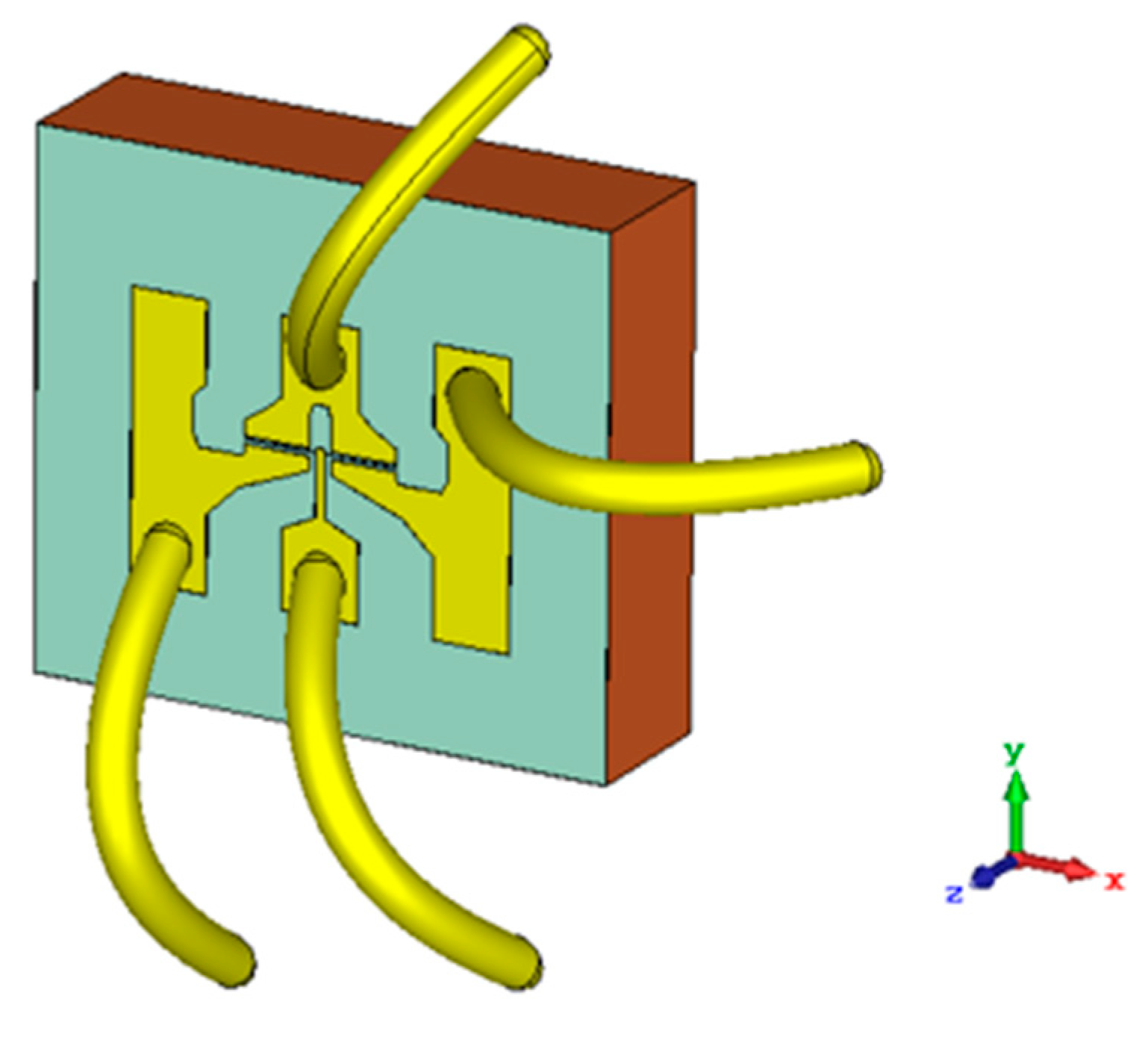
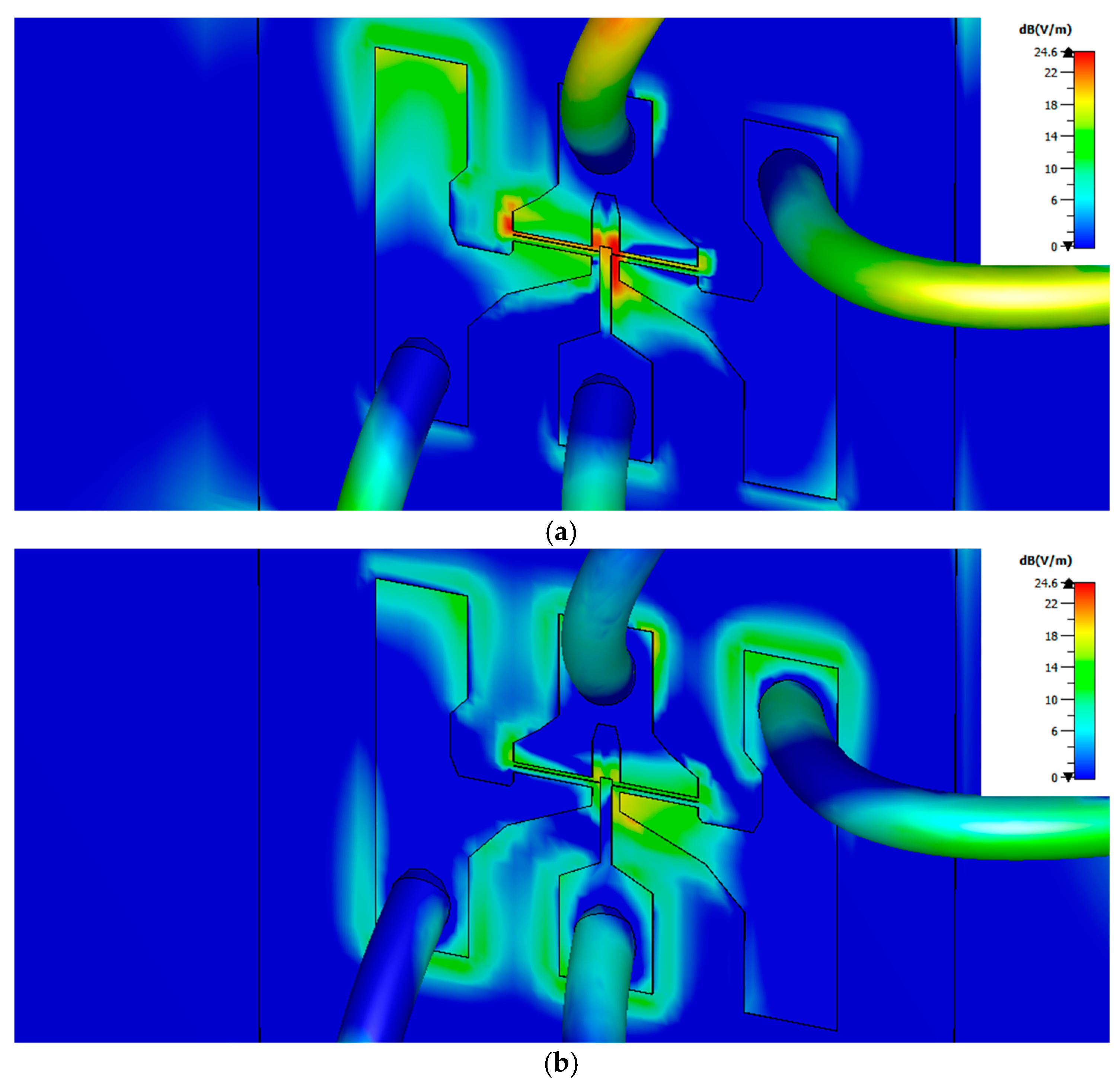
| Lg (μm) | 0.15 THz | 0.30 THz |
|---|---|---|
| 0.50 | 22.0794 dB | 24.5535 dB |
| 0.25 | 22.0863 dB | 24.5226 dB |
| 0.15 | 22.0893 dB | 24.5115 dB |
| 0.10 | 22.0907 dB | 24.5063 dB |
| Lg (μm) | 0.15 THz | 0.30 THz |
|---|---|---|
| 0.50 | 11.2471 dB | 20.7173 dB |
| 0.25 | 10.5597 dB | 20.4073 dB |
| 0.15 | 10.4940 dB | 20.2211 dB |
| 0.10 | 10.3451 dB | 20.1707 dB |
| Lg (μm) | 0.15 THz | 0.30 THz |
|---|---|---|
| 0.50 | 32.9939 dB | 23.8939 dB |
| 0.25 | 33.0075 dB | 23.9190 dB |
| 0.15 | 33.0081 dB | 23.9220 dB |
| 0.10 | 33.0085 dB | 23.9233 dB |
| Lg (μm) | 0.15 THz | 0.30 THz |
|---|---|---|
| 0.50 | 35.7280 dB | 25.5638 dB |
| 0.25 | 35.6415 dB | 25.4949 dB |
| 0.15 | 35.6404 dB | 25.4947 dB |
| 0.10 | 35.6399 dB | 25.4947 dB |
Publisher’s Note: MDPI stays neutral with regard to jurisdictional claims in published maps and institutional affiliations. |
© 2021 by the authors. Licensee MDPI, Basel, Switzerland. This article is an open access article distributed under the terms and conditions of the Creative Commons Attribution (CC BY) license (http://creativecommons.org/licenses/by/4.0/).
Share and Cite
Calvo-Gallego, J.; Delgado-Notario, J.A.; Velázquez-Pérez, J.E.; Ferrando-Bataller, M.; Fobelets, K.; Moussaouy, A.E.; Meziani, Y.M. Numerical Study of the Coupling of Sub-Terahertz Radiation to n-Channel Strained-Silicon MODFETs. Sensors 2021, 21, 688. https://doi.org/10.3390/s21030688
Calvo-Gallego J, Delgado-Notario JA, Velázquez-Pérez JE, Ferrando-Bataller M, Fobelets K, Moussaouy AE, Meziani YM. Numerical Study of the Coupling of Sub-Terahertz Radiation to n-Channel Strained-Silicon MODFETs. Sensors. 2021; 21(3):688. https://doi.org/10.3390/s21030688
Chicago/Turabian StyleCalvo-Gallego, Jaime, Juan A. Delgado-Notario, Jesús E. Velázquez-Pérez, Miguel Ferrando-Bataller, Kristel Fobelets, Abdelaziz El Moussaouy, and Yahya M. Meziani. 2021. "Numerical Study of the Coupling of Sub-Terahertz Radiation to n-Channel Strained-Silicon MODFETs" Sensors 21, no. 3: 688. https://doi.org/10.3390/s21030688
APA StyleCalvo-Gallego, J., Delgado-Notario, J. A., Velázquez-Pérez, J. E., Ferrando-Bataller, M., Fobelets, K., Moussaouy, A. E., & Meziani, Y. M. (2021). Numerical Study of the Coupling of Sub-Terahertz Radiation to n-Channel Strained-Silicon MODFETs. Sensors, 21(3), 688. https://doi.org/10.3390/s21030688







